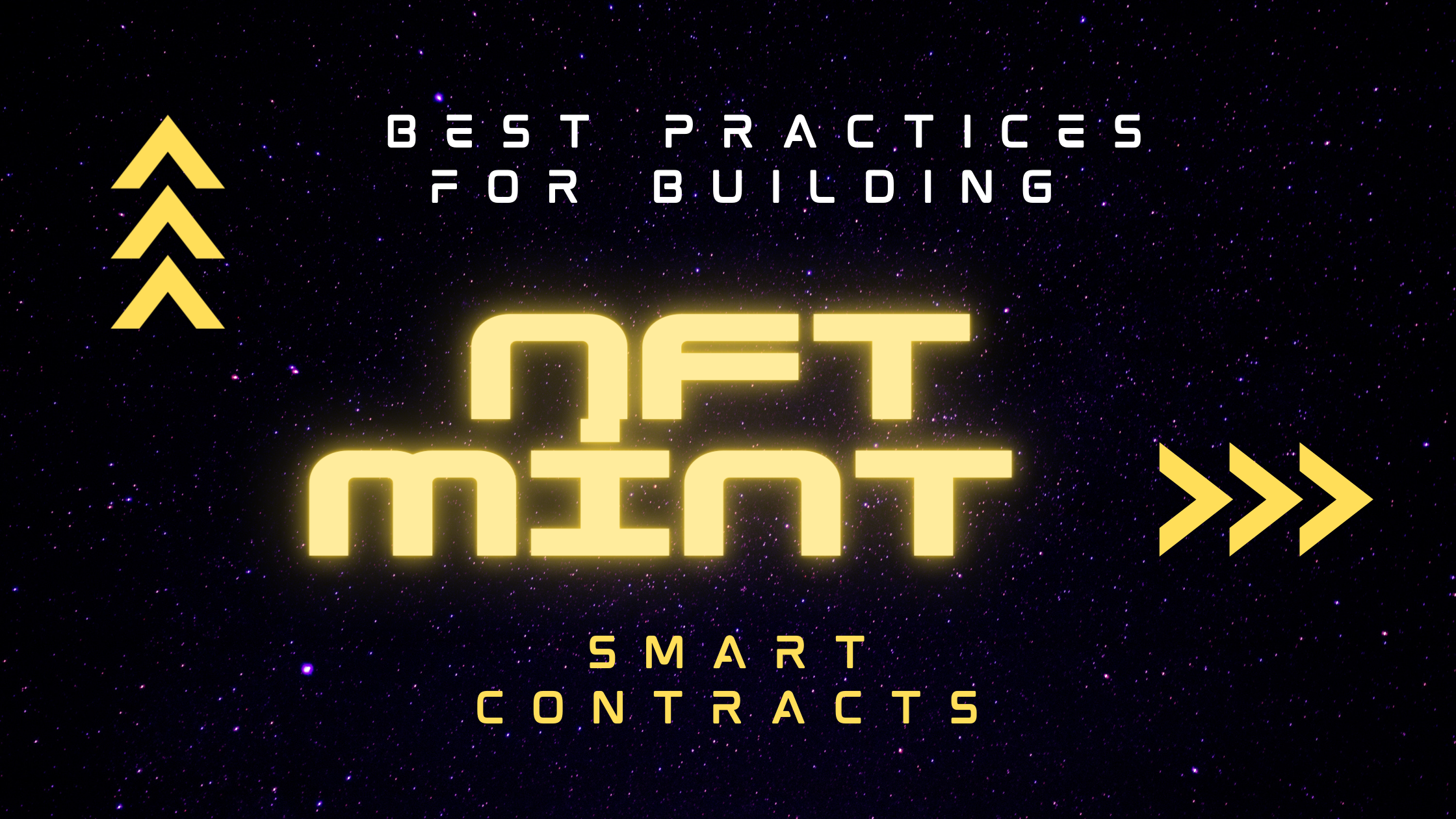Non-fungible tokens or NFTs are creative intellectual properties that can be sold and traded and are non-interchangeable. NFTs have currently exploded in popularity and are trending hot. NFTs can be defined as non-fungible digital assets that represent unique items and crypto tokens managed on blockchains.
As per a new estimate by blockchain analytics firm Chainanalysis Inc, in the year 2021, nearly USD 41 billion worth of cryptocurrency was sent to two types of Ethereum smart contracts associated with NFT marketplaces. The popularity of NFTs exploded last year with record-breaking multimillion-dollar sales.
A smart contract is a program whose code and data reside on the Ethereum blockchain at a specific address. They are pieces of code that allow the Ethereum blockchain to store the information or data in a transparent and immutable manner.
Smart contracts are primary to the functioning of non-fungible tokens. These codes in the form of smart contracts are what control these digital assets known as NFTs. It is estimated that the global smart contracts market will reach USD 345.4 million by 2026 at a CAGR of 18.1% during the forecast period 2021-2026.
Initially, smart contracts were majorly used for finance and the real estate market but over the past few years with the increasing popularity of NFTs, smart contracts for NFTs form a major pa of the smart contract market.
NFTs and Smart Contracts
A Smart contract is programming on the blockchain and enables the network to store the NFT transaction and ownership-related information. Creators can add details like their identity, secure links to files, and also rules about trading the NFTs to smart contracts. Once the NFT related information is stored using smart contracts it can be accessed as required and this information is transparent and immutable.
NFTs are handled by smart contracts which control actions such as handling the transferability and verifying the ownership. Since it is a software application, the NFTs are programmed in a way that they can go beyond these basic functions and add more functionalities beyond simple transactions.
Creators can specify additional functionalities to the NFTs like granting specific rights to a select group of people, linking to other digital assets, or handling royalty payments. NFTs can have permanent identification information with the help of smart contracts which also ensures that the NFTs cannot be sold by dividing them into smaller units.
Smart contracts are codes written into the blockchain and are run by a network of computers. These computers execute all agreed-upon actions coded in the smart contract if the predetermined actions are met and verified. Smart contracts make each NFT unique and add value to them.
How are Smart Contracts created for NFTs?
Minting is the process of making an NFT which is writing the underlying smart contract code. The qualities of the NFTs are determined by the smart contract code. This code adds the NFTs to the relevant blockchain for which they have been specifically coded.
Ethereum was the first blockchain to use standards for creating a smart contract for NFTs. Currently, many standards have been established for smart contracts.
Standards of Smart Contracts for creating NFTs
The smart contract used to create an NFT has to be feasible for the blockchain on which it will be used and the smart contract’s code must comply and support specific functions of the blockchain. Since Ethereum is most widely used for NFTs, the standards for Ethereum must be considered. The Ethereum blockchain has a unified standard for NFTs and that is ERC 721.
ERC 721 standard is an open standard and is unique, unlike most other standards. It describes the process of building NFTs on the Ethereum blockchain. It allows reliable and uniform communication with the smart contract which makes it clear for an individual or NFT platform to interact with the NFT.
When a token is transferred, information regarding the address of the smart contract and ID of the token is required. A single ERC 721 can manage multiple tokens at a time.
Creators with the requisite skills can program a smart contract completely by themselves on the Ethereum blockchain following the ERC 721 standards. Alternatively, creators can use the many existing smart contract templates that are freely available and accessible. They can be used in online libraries under open-source licenses and some individual data or codes such as the name of the token, and functions of transactions can be added.
Smart contracts, copyrights, and licenses
The smart contracts cover several things which include the actual rights that are being sold for an NFT. It is generally assumed that with the asset the buyer owns the copyright too. But that is not the case.
When a user buys an asset, he has the ownership of the asset but not the copyright rights of the asset. The copyright stays with the author of the asset except in cases where it is mentioned otherwise in the contracts.
The rights that are being transferred to the buyer are explicitly mentioned in the NFT license. The terms for each transaction are different and are specifically coded in the smart contracts and the licenses display the permissions that have been given to the buyer for the asset.
Some features of smart contracts to be considered for NFTs-
Gas efficiency – The unfortunate fact of creating smart contracts on Ethereum is the transaction fees and the cost of NFT gas is even more. Successful NFT projects are generally vulnerable to high fees since the cost of the token is inflated. High gas costs are extremely unattractive for users and they may end up putting off the project altogether.
With NFT projects being launched every day, the gas fees skyrocket during public sales. A project with a huge number of members trying to mint numerous NFTs at the same time results in gas wars. These gas wars take the gas prices of the NFTs very high. During times like this, users end up paying a high gas fee and sometimes even more than the NFT prices with no guarantee of getting an NFT since the supply is limited.
Once the sale ends the gar price starts reducing gradually. To avoid the gas fees, spike a workaround can be considered where users can reserve the NFTs at the time of sale instead of minting. In this way, the Ethereum network does not get clogged and the users can mint their NFTs at their own time within a specified period.
Code style – Currently, developers are beginning to implement smart contracts with reduced gas costs. The new wave of smart contracts is undertaking innovations in three main areas to reduce NFT gas costs at a high level. They are – Custom implementations of the ER 721 standards, replacing powerful libraries with lean, lightweight code and cryptographic whitelisting.
Developers nowadays are using existing code libraries to avoid bugs and risks. They are using these pieces of code for implementing the base ERC 721 interface for their NFT projects. This also helps developers to focus on the unique parts of their projects. OpenZeppelin is a Solidity library that is a repository of reliable and effective smart contracts and industry standards for both fungible and non-fungible tokens.
Implementing functions such as tracking on-chain all the tokens owned by an address can be done by an OpenZeppelin library called ERC721Enumerable. But every time a token is minted or transferred extra operations have been introduced that cost the users. Thus, users can either not use the whole suite of the functionality of ERC721Enumerable or replace it with other libraries like Counters to reduce code for simple functions.
Security – Smart contracts can authenticate the NFT and its ownership by tracing the unique history of the token. The history includes information like how the token was developed and linked to creative work. All this information is available publicly on the blockchains. The wallet address and its linked metadata can be verified through the public blockchain.
Once an NFT is bought, its unique token which includes details of the smart contract is issued to the buyer. This transaction is registered on the blockchain and is public. It includes information regarding the proof of purchase and ownership.
The image or asset can be reproduced but the blockchain and smart contract can prove their own which will make the reproduced image or asset worthless. The owner of the asset can display and sell it and the transfer of any NFT is authorized if the personal key of the owner is used.
Conclusion
The two things to do with NFTs are minting them and transferring the ownership to a buyer. NFTs are essentially proof of ownership of assets so the owner needs to prove to the buyer that he owns the assets he wants or sells or transfers.
Smart contracts are the building blocks of any NFT to provide proof of ownership of assets or tokens. Smart contracts create an environment of trust as all the information regarding the NFTs is public on the blockchain network. These features of smart contracts like trust, security, and real-time execution have made NFT transactions easy and reliable. Smart contracts have contributed immensely to this exploding popularity of NFTs over the past few years and made them an instant hit.


